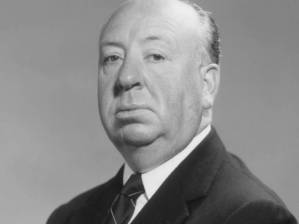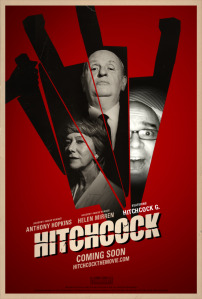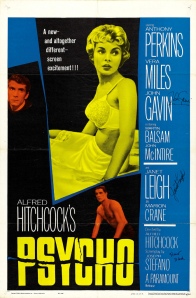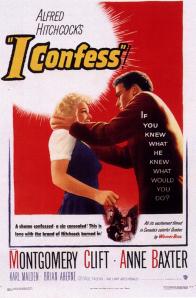Introduction to Hitchcock:
Sir Alfred Hitchcock was born on the 13th August 1899 and died on the 29th April 1980. He was an English film director and producer who specialized with many techniques in creating suspense and psychological thriller genres. Hitchcock was became England’s best director and ended up moving to Hollywood where he developed his career further within the film industry. He mastered silent films as well as films with sound and dialogue.
Filming
Hitchcock established new ways of filming as technology developed and began moving the camera in certain ways to enormously increase the suspense and to make the audience feel more involved within the film and make them feel like they were the characters. He framed shots differently to maximise different emotions and framed different angles, such as the point of view shot and close ups, to make the audience feel like they were in the shoes of characters and make them understand what’s going on in the scene between the characters. Most of Hitchcock’s stories involve a villain or fugitive who is trying to escape the law and usually involve a blonde female character. His films usually feature thrilling plots and have twists within the film. Also he usually portrayed a lot of violence, murder and crime to create high levels of suspense. Furthermore, Hitchcock frequently used these things called a “MacGuffin” which symbolizes something the villain and the hero is trying to get or achieve. For example, the MacGuffin could be money, love, power, diamonds, a location, a person or even survival. From his films and style, Hitchcock became a cultural icon.
Examples of Alfred Hitchcock films:
| SILENT FILMS | BRITISH CLASSICS | VINTAGE HOLLYWOOD | MOST SUSPENSFUL |
| The Pleasure Garden (1925) | Murder! (1930) | Rebecca (1940) | To Catch a Thief (1955) |
| Downhill (1927) | The Man Who Knew Too Much (1934) | Mr. and Mrs. Smith (1941) | The Wrong Man (1956) |
| East Virtue (1927) | Sabotage (1936) | Suspicion (1941) | Vertigo (1958) |
| Champagne (1928) | Jamaica Inn (1939) | Saboteur (1942) | Psycho (1960) |
References and useful websites:
http://hitchcock.tv/mov/hfilm.html
http://www.biography.com/people/alfred-hitchcock-9340006
http://www.imdb.com/name/nm0000033/
This clip based on Alfred Hitchcock is about some of the techniques that Hitchcock used to create suspense when creating his films. From this clip, I have learnt that the audience is the most important thing when creating a film; the movie experience must be enjoyable for the watchers otherwise the audience will not want to watch the film. Hitchcock has a technique where he wants to get the audience to feel like they are in the characters place and to show the audience what the characters care about and what they need. Also he uses a lot of close ups to show the full emotion that the characters are showing. I find this important when watching films as I know what the characters care about and their emotions towards others. Another technique Hitchcock uses to show emotion is that he uses differences in proximity to help add to the effect of what the characters are feeling out of a scene. From my experience of watching films, I would say that when making a film, the camera shots should be a long distance away from the character if they are showing emotions or feelings that are lonely or show emotional distance between characters. When showing emotions or feelings such as sadness, fright, or intimacy, the camera shots should be close-ups or shots that are zooming in to the characters faces to show their emotions. For example, here is a shot that shows intimacy between two characters to make the viewer understand that they are affectionate with each other and are in love.
From this image, you can see that from the part of the clip about zooming in helping to demonstrate emotions, shows that the viewer can get an idea as to what the emotions the characters are showing. These types of shots show implicit imagery which can suggest meaning or relate to representation and can help strengthen the meaning of the camera shot.
Another technique Hitchcock used was to try and tell the story through visuals, not through dialogue. A part of the clip on Hitchcock’s techniques stated that Hitchcock uses the camera to ‘reveal the story with objects’. Also Hitchcock stated that “often the eyes will reveal what a person thinks or needs”. I agree with these statements because I find that by using the camera to show shots of what a character is thinking or what they need, the audience can sometimes understand what the character intends on doing but also helps to put the audience in the characters place and makes the movie experience seem more thrilling and intriguing. I thin k this is a really good idea because if the film has too much dialogue and uses the same basic shots, the audience will get bored and lose interest in the film, therefore the more of a variety of camera shots and the less dialogue keeps the audience entertained and sometimes makes them wonder different things such as what they are going to do with that object or what is the relevance of the object in that scene.
An additional technique Hitchcock used when making his films was point of view shots and reaction shots. With reaction shots, for example, he would show the characters facial expressions, then something that character would be looking at, and then back to the characters facial expressions to see what their thoughts and emotions were based on that event. This is a useful technique as it informs the audience as to what that character was thinking and what happened that made them think or feel that. Using point of view shots is also important because the audience can visually see what a character is looking at, which also helps to put the audiences in the characters place, resulting in the film seeming more intriguing. Additionally, Hitchcock used a variety of images that make up a montage, which shows a variety of images together to get the feel of what the scene is about. He used a montage of images mainly when conflict was taking place and used a lot of close ups to get the important details needed in to the scene. For example, you may see a fight taking place in a film and a montage of images is used. The shots might be point of view shots of the enemy fighting the protagonist, then a point of view shot of the protagonist view of the fight, maybe the enemies face, then a shot of an object useful in the conflict, i.e. a knife, and then a shot of the protagonist looking at the knife. These types of shots build up tension and make the audience feel more involved in the film and make it seem more intriguing to watch. I find this technique useful as it gives the audience little details as to what could happen and what the characters are thinking.
In conclusion, I feel that Hitchcock’s techniques are very useful when making a film and I have realised that when creating a film, the most important aspect is to make sure you tell the film through visuals and less of the dialogue to express thoughts, emotions and what is going on in the scenes. Also it is important to capture the characters emotions by using close ups and reaction shots to get the audience to understand what the characters are thinking or feeling.




